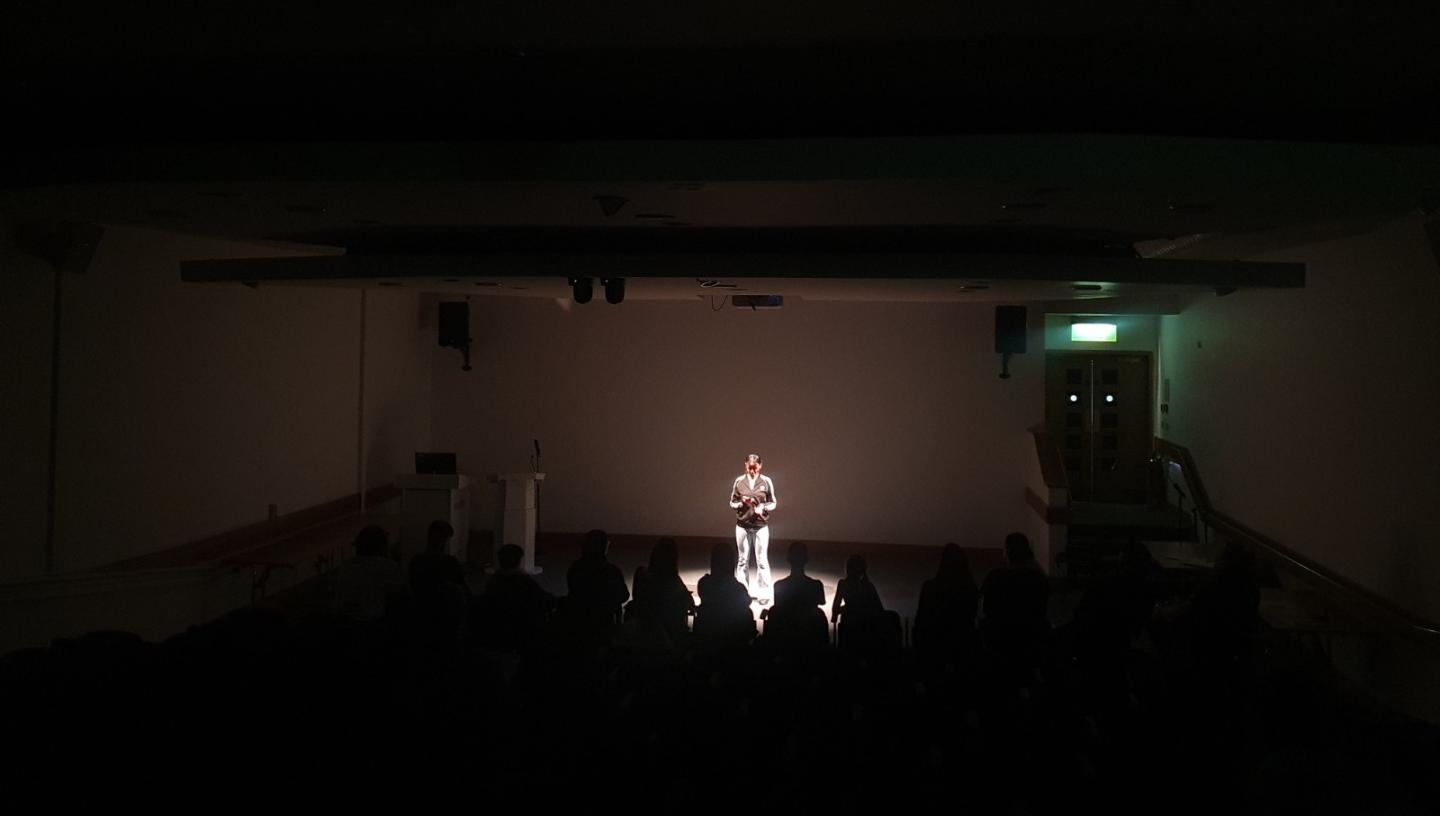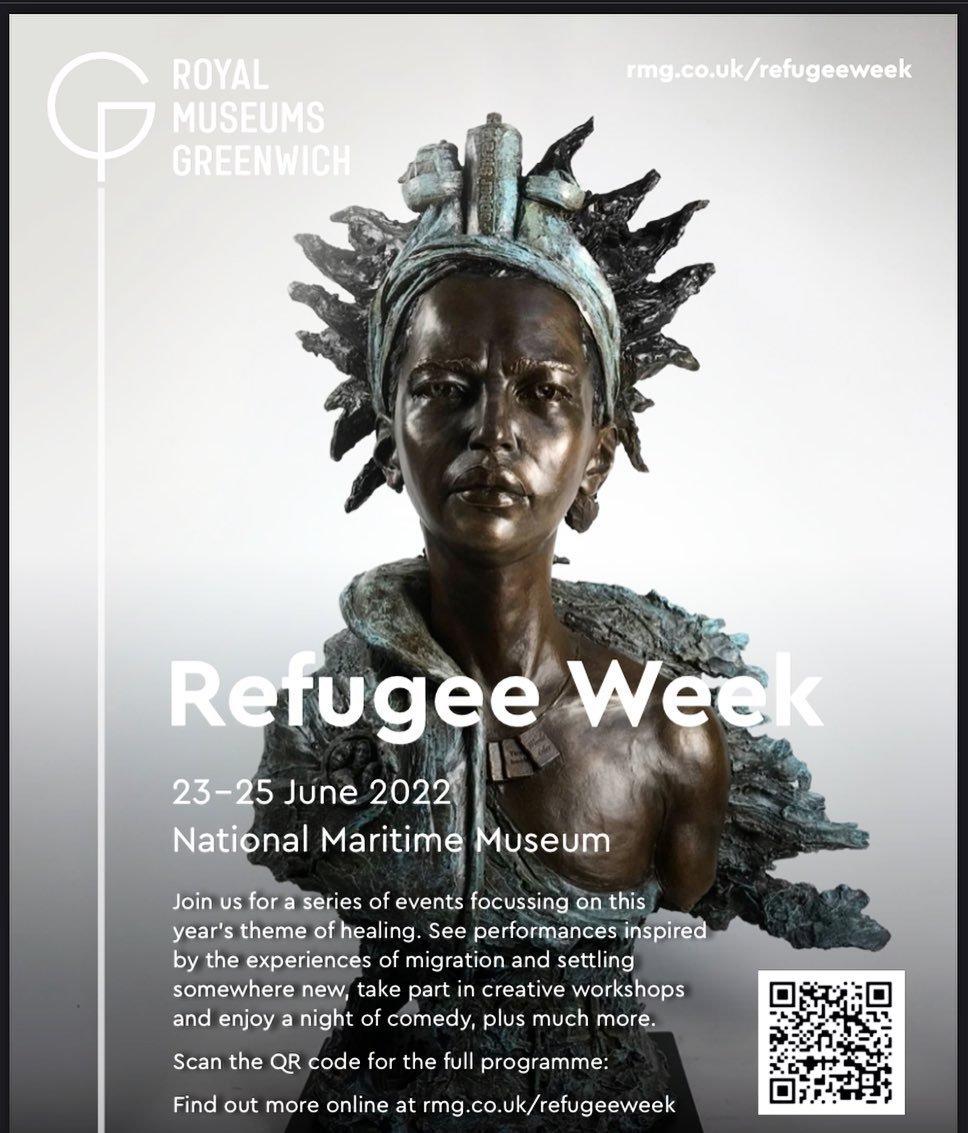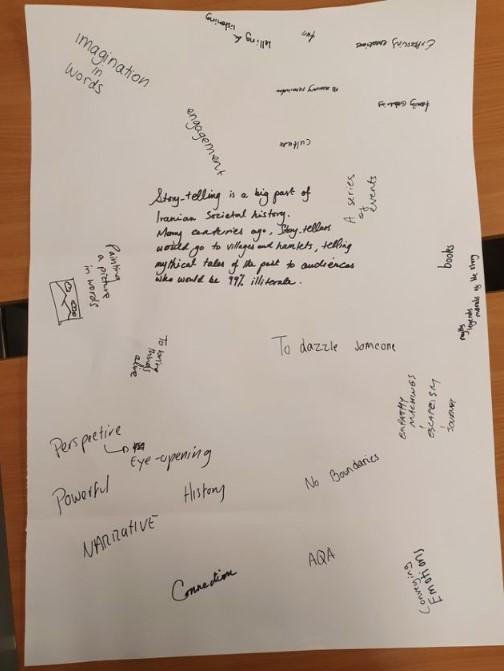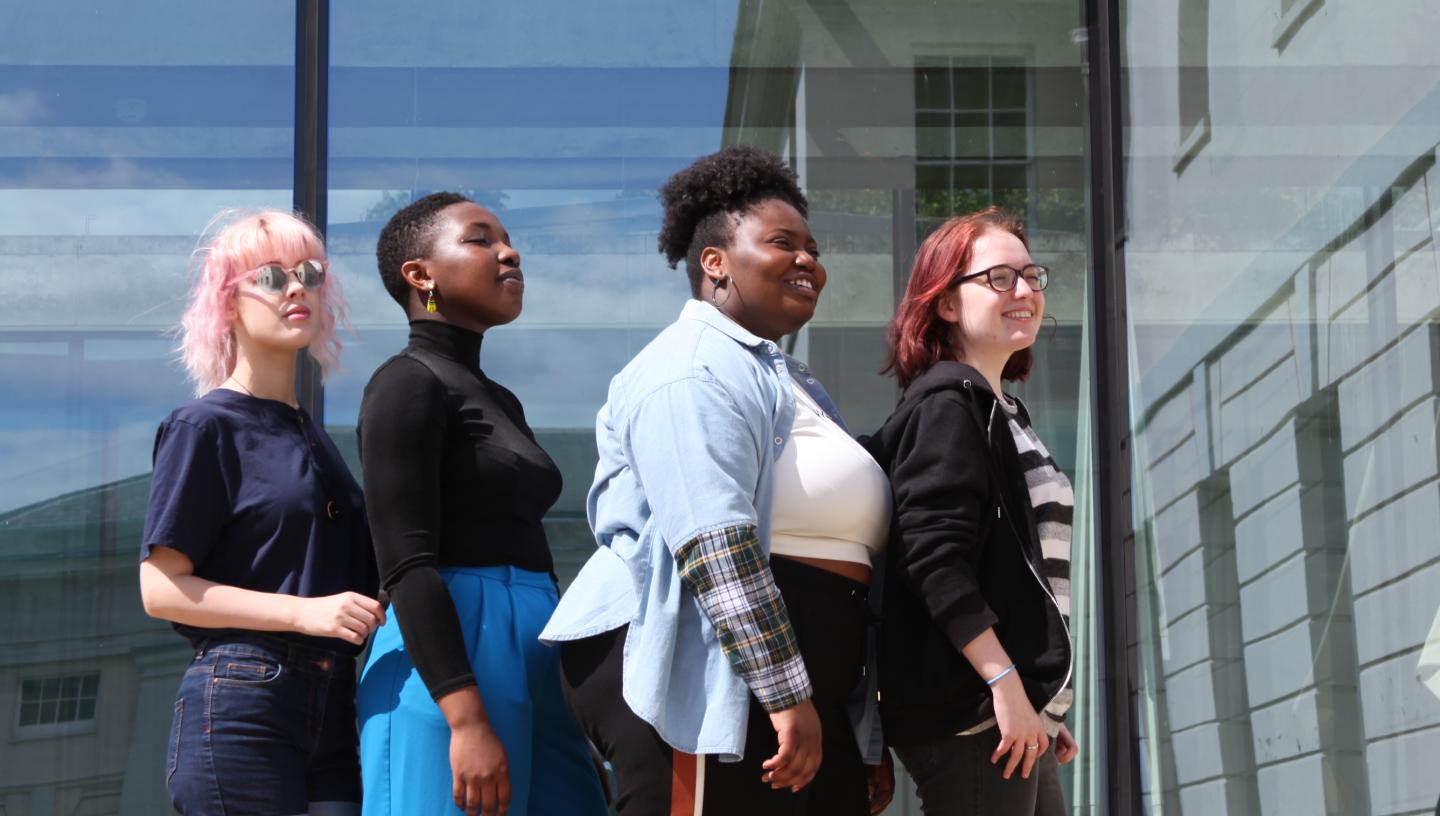
Making Landmarks 2022 was delivered in partnership with IYDA, a Farsi-speaking community in South London, to creatively respond to stories, themes and objects from the collection based around identity, belonging and migration.
Over a series of three months, the group of young people worked with professional storyteller Olivia Armstrong to co-create a performance based on their lived experiences of migration and displacement. The performance was aimed to raise awareness of the varied refugee experiences, and the myriad of social and cultural issues experienced when arriving in the UK.
They performed their work ‘It Could Be You’ to over 100 people at the museum, as part of National Refugee Week. This project was intergenerational, as parents/grandparents also attended tours and lectures in tandem, connecting with Persian heritage and supporting the YP with their performances as a result.
‘Before this project, I didn’t realise how important storytelling was in Persian Culture - connecting with objects in the museum that storytellers would have used and toured around with made me feel more connected to my ancestors, and definitely a skill I want to preserve’ - YP
Read on for our artist’s response, by Olivia Armstrong.
You can find out more about Making Landmarks here.

Making Landmarks – an artist’s response by Olivia Armstrong
Storyteller: What is Storytelling?
Young Person: Imagination in Action.
My name is Olivia and I am a professional storyteller, originally from Ireland but now living in London. As a storyteller, I work across all communities from early years to elders, people with additional needs, families, schools and young people and I love my job! Storytelling has the ability to connect with everyone, often in unexpected and profound ways.
I began working with Royal Museums Greenwich back in 2010, and since then I have worked on many, many storytelling projects, including retelling Greek myths for LGBTQ+ families during Rainbow Week, community engagement work at the Cutty Sark on the large-scale All-Over Dressed Project, curating adult storytelling nights in the Michael Edwards Studio Theatre and the redevelopment of the Polar Worlds Gallery at NMM amongst many more! I love these sites, especially being able to share them and open up their histories and stories.
During the spring and summer of 2022, I worked as lead artist on Making Landmarks, a creative community project in collaboration with the National Maritime Museum and the Intercultural Youth Development Association in Woolwich. Working alongside the excellent Rachel Dunlop – the youth Projects Producer - we worked with a group of young people primarily of Iranian heritage within the Faris-speaking community to create a piece of spoken-word theatre based on their lived and inherited experiences of migration, with the aim of performing it for the public in the Museum during Refugee Week in June.
With a limited number of sessions, we alternated between working with the young people at their base in Woolwich and them coming to explore the galleries at the National Maritime Museum.
As a storyteller, I needed to showcase what storytelling means, its relevance, and how it can be used as a social tool in a museum context. I wanted to nurture a creative crucible of cultural folktales, personal stories and histories, and display how using lyricism, images and performance techniques could emotionally impact, engage and entertain listeners. Storytelling is connection and continuity within community. With this aim, the young people could be enabled to explore the power and potential of storytelling to create and tell their own stories. They would have agency to use the public galleries of the museum to speak their own words and tell the stories that mattered to them in that moment.
As the group had specifically requested to work with a storyteller, I was intrigued to discover what storytelling meant to them initially. I asked them simply to respond with what storytelling meant to them.

Their reactions were playful and profound with one writing 'Storytelling is imagination in action.’
During our first session together, I began, as I always begin any session, by telling a story. I instantly knew the first story to share – that of a young person who wanted luck. The character sang to me and the story, although a few hundred years old, had very modern and relatable resonances with the central character of a young man wanting to stay at home and wait for luck to come to him, as all the members of the community from his mum to the local Imam try to persuade him to leave his bedroom and go off in search of his destiny! I found it in this wonderful collection of authentic Iranian folk and fairy-tales The Secret of Laughter: Magical Tales from Classical Persia by Shusha Guppy.
They loved the story, and part of its successful reception was in no small part due to the fact the name of the central character was the same as a friend who often attended the group. They told me the personality of this character mirrored their friend, and once they had found that hook, they were invested in the story and could really relate to it. It instantly placed them within the world of the story. This is the sort of magical coincidence that often happens within storytelling. The right story seems to find the right audience at the right time! It is a kind of alchemy!
The participants had a real sense of wonder when listening to stories. I felt perhaps they hadn’t experienced storytelling since they were much younger. To see them gradually becoming drawn into the narrative was really exciting, especially the ones who at first appeared to resist it. Gradually arms unfolded, phones were dropped…and laughter rang out.
In order to develop their own storytelling skills, we would play drama, narrative and role-playing games. It was truly amazing to hear the diversity of stories and styles they immediately created, from elaborate fairy-tales, to their own experiences relayed with the full immediacy, poetry and lyricism of modern slang, which added a whole layer of connection, recognition and humour for their listening peers. I loved seeing their swagger grow as they began telling the stories, saw they had their audiences hooked and proceeded to embellish and develop the tales much to their listeners’ delight and encouragement!
Without someone to listen, there can be no storytelling. We had shared the stories with each other but now was the time to create the performance and invite the National Maritime Museum visitors to come in and share. The participants weighed up many museum spaces for performance. They loved the drama of the Baltic Glass area and the intimacy of some of the smaller rooms, but once they stood on stage in the Museum’s lecture theatre, they knew this was the “proper” space to deliver their words to the public.
Which they did. After overcoming the initial and natural nerves, they told their stories with pride and confidence and resilience with everyone taking ownership of the moment and sharing what they had created with their community and the wider audience of NMM visitors.
In a twist, that could be straight from a fairy tale, it was then I finally met the person who had been recognized in the story from the first session. They had come to watch the performance and support their friends, and had heard with much bemusement, that they were the subject of a traditional Iranian folktale. Everyone came up saying this is him, this is him! That was a joyful moment. He was a story celebrity!
I learnt a lot from this project. I quickly realised that such projects have a much wider reach than the core demographic we had primarily been asked to work with. In this instance, as well as the young people, there were also younger siblings and older people present- when you work with a community, you work with the whole of the community!
We were made to feel so welcome when we first visited the group, being invited to share tea and food. After the first session one of the leaders of the group, Ava, commented that there was a real link between Irish and Iranian culture. Daniel and Taqi elaborated and explained the tradition of travelling storytellers going from village to village sharing tales orally was a huge part of Iranian culture which of course is also true in Ireland. It felt like a really powerful connection to make - a bridge between cultures and even more special because the connection came from a participant.
Projects like this are invaluable for forming strong bonds between museums and supporting the communities which surround them. They are a way of museums opening up, becoming more than a collection of objects but living extensions of people’s lives and experiences. Rather than museums telling the stories of those people, they’re enabling the people – particularly young people, who often don’t have a greater voice, or agency - to bring and share their stories, inhabiting and reinvigorating the space.
It was a privilege to work with such open, generous and creative young people. Thinking about them and their willingness to play and share stories still makes me smile! I feel lucky and grateful that I got to meet and work with them.

Young People at Royal Museums Greenwich

